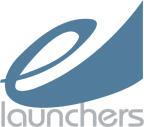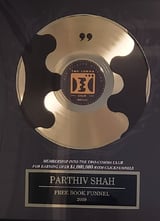
It’s no secret that newsletters are a great way to maintain contact with your customer base, and to communicate offers, news, ideas, and expertise to potential clients. But how many email newsletters do you receive each week? Each day? And of those emails, how many do you open? How many do you read? I bet it’s only a small fraction of those that land in your inbox.
The work involved with writing, producing, and distributing a newsletter for your business can be a time-consuming task. This is especially true when you are faced with having to compete with all the other information that your customers are bombarded with on a daily basis.
However, a regular company newsletter can be an important part of your marketing strategy, allowing you to build a stronger relationship with your clients and increase customer retention and the strength of your business.
So what is the difference between newsletters that get opened, and ones that get junked? How do you make sure that the time and money you invest in this communication tool provides a measurable return?
Why Send Newsletters?
· To build trust. Newsletters are an effective way to forge stronger, trust-based relationships with your customers. They are an informal, newsy type of communication that can be highly personalized for individual recipients.
· To update your customers. Newsletters let your customers know about changes and developments in your business, including the comings of new employees and products or services.
· To promote your products or services. A strong newsletter will repeatedly reinforce your marketing message, and keep your offering at the top of your customer’s minds.
· To stay in touch (and top of mind!). Newsletters help you show your customers that they’re important to your business, and that you haven’t forgotten about them since they left your store.
· To build a community around your business. Regular newsletters that feature useful information and community events create a community of people with a common interest: your knowledge, expertise, and offering.
Writing An Effective Newsletter
An effective newsletter should be easy to read, contain interesting and relevant information, and be visually engaging. When you send information to your customer’s inbox, you are asking them to invest their time in reading what you have to say. Make sure they finish feeling that their time was well spent.
Know who you are talking to. As with every other piece of marketing collateral, you must establish who you are trying to reach before you put your content together. Don’t make the mistake of assuming everyone will be interested in what you have to say. Who are your readers? Are they internal (employees) or external (customers) to your organization? What are their interests? Do they like to be entertained or do they just want information? How much time do they have to read your newsletters?
Use language that that they can easily read and understand. Are you talking to computer programmers or teenagers? Would you spend time reading a book that wasn’t interesting or was written in a language you didn’t understand? Speak to the readers using language and references that they will relate to.
Here are some helpful tips to consider when writing for your audience:
· Keep the tone informal and conversational
· Write in first person to establish a relationship
· Be direct – use as few words as possible and keep it simple
· Avoid flowery or overly descriptive language
· Stay away from salesy or advertising language
Provide Relevant and Interesting Content. The backbone of your newsletter is the content. Without solid, valuable content, even the most attractive and well-formatted newsletters are virtually ineffective. With so many other things competing for your customer’s attention, it is crucial to make your newsletter interesting and relevant. How does it add value to their lives? Why does it deserve their attention?
Keep it purpose-focused. Like every other piece of your marketing collateral, your newsletter must serve a clear purpose, and stick to it. The content should all support this overarching purpose, which will ensure the newsletter is a strong communication tool. Is your goal to:
· Provide information?
· Fundraise?
· Recruit new staff?
· Maintain contact with customer base?
· Promote offers and services?
· Drive sales?
Entertain. Make use of a newsletter’s informal tone, and entertain your reader. Add content from external sources, including humorous stories and cartoons that are related to the purpose of your newsletter and the product or service you are offering. This will break up the more serious content.
Write well. If writing is not your strong point, hire a writer to draft your newsletter. This may also be a good idea for busy business owners that struggle to find the time to complete a monthly outreach piece. Make sure you avoid industry jargon, and if you have to use it, make sure to define it for your reader.
Deliver Information. It will be clear to the reader if you are sending a newsletter just for the sake of getting your log into their inbox. Make sure that your newsletter provides information that is relevant and useful to the reader. Have something to say that will benefit the reader, even if it is external content like media clips, events, or website links.
Keep it sweet. Short and sweet, that is. No one has time to read exhaustive amounts of copy, no matter how relevant it may seem. Keep the newsletter tight and limited to a few short news items and some information on your offering. Here are a few tips for managing content length:
· Include a summary of the newsletter content at the top
· Provide short summaries of each article, with a link to “read more”
· Make generous use of headlines and sub headlines
· Put concise information in bullet form
Ask them to act. Always provide a call to action, even if it is a subtle one. You are spending time and money to produce a newsletter in efforts to ultimately increase your business. Ask for the sale – just like you would in a brochure or sales letter. Get readers to visit your website, pick up the phone, fill out the registration form, or lend their support.
Let others speak for you. After you spent all that time gathering great testimonials, make sure you put them to use! If you choose not to dedicate an entire section of your newsletter to customer testimonials, make sure you include them in the header, footer, or margins of the page. They also work well to break up sections of text.
Give it a name. Just like a newspaper, give your newsletter a title that readers will remember and connect to your business.
Commit To A Timeframe You Can Maintain
Choose a frequency you can maintain. Newsletters can be time consuming, so be realistic about how often you promise to distribute them. This depends on your resources, and the needs of your business, but generally once a month to once every three months is a good time frame. Sending out a newsletter too often can be just as detrimental as not sending them often enough.
When you determine the frequency of your newsletters establish a publishing schedule and stick to it. Work your way into your customer’s routine so they are expecting and looking forward to receiving your newsletter.
Develop a publication plan in advance, planning the general themes and giving yourself, so you have time to gather information and ideas.
If you liked what you read in this post and want to learn more, click below.







